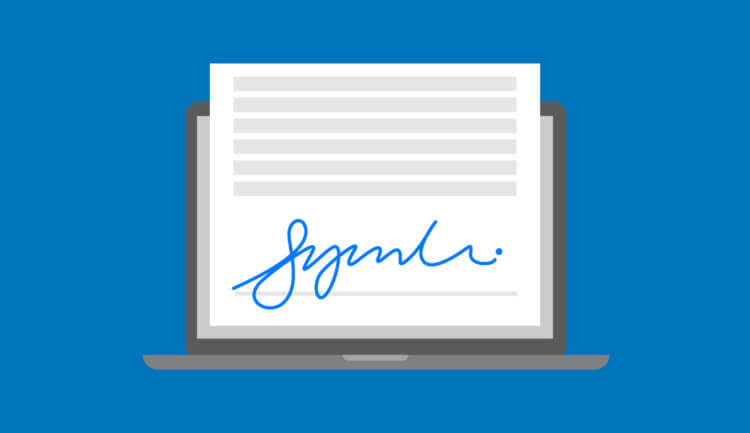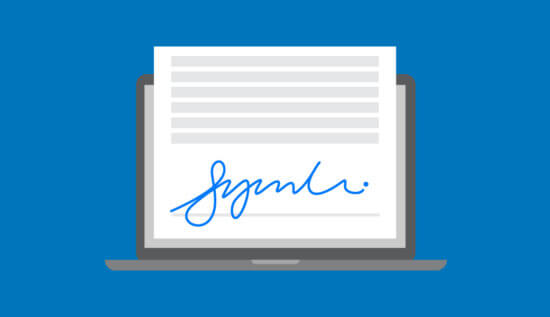Electronic signatures (or e-signatures) have become nearly ubiquitous in everyday life and business—from confirming your agreement to terms and conditions on a website to using e-signature tools to sign a work contract.
But are electronic signatures legally binding? Can—and should—you use e-signatures to sign legal documents at your law firm? Have traditional handwritten signatures become a thing of the past?
Are Electronic Signatures Legal?
Yes, electronic signatures are legal in the U.S. under the ESIGN Act and UETA. They are as binding as handwritten signatures if certain conditions are met. However, some documents, like wills and court orders, may still require handwritten signatures.
Since the 2000s, most people in the US have been able to sign documents electronically; some people still opt to use traditional handwritten signatures—even in instances where e-signatures are legally binding, more convenient, and more secure than wet signatures.
From understanding the legal framework behind e-signatures in the US to useful tips, tools, and best practices for electronic signatures, in the following post, we’ll outline what you need to know about whether electronic signatures are legally binding. We’ll also offer tips for how e-signatures can help streamline document processes and improve efficiency at your law firm—when used correctly.
What is an electronic signature?
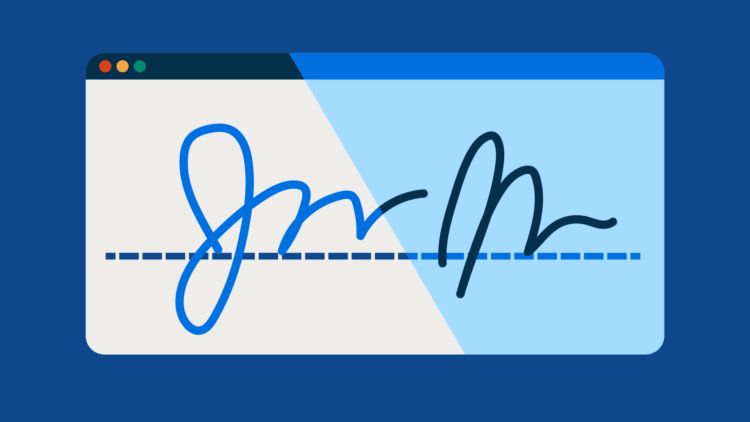
First things first: What exactly do we mean when we refer to an “electronic signature”?
In the US, the Electronic Signatures in Global and National Commerce Act (ESIGN) defines an electronic signature as “an electronic sound, symbol, or process, attached to or logically associated with a contract or other record and executed or adopted by a person with the intent to sign the record.”
What is an e-signature?
An e-signature, short for electronic signature, is a digital representation of a person's signature used to sign documents electronically. It serves as a legally binding way to indicate consent or approval on electronic documents.
Put simply, an electronic signature requires the signer to take some sort of electronic action with the clear intent of that action functioning as a “signature.”
In practice, an electronic signature can take many different forms, such as:
- Clicking an “I Agree” or “I Accept” button to signify consent with terms on a website
- Typing your name and submitting a form online
- Signing your signature with your finger on a mobile device
- Using an electronic signature platform to e-sign a document
Are electronic signatures Legal?

To better understand how and when electronic signatures are legal in the US, let’s start by outlining the legal framework behind electronic signatures.
ESIGN, UETA, and laws governing e-signatures in the US
In the US, there are two primary laws governing electronic signatures:
- The Electronic Signature in Global and National Commerce (ESIGN) Act is a federal law that serves to create a US standard for electronic signatures. The ESIGN Act applies nationwide.
- The Uniform Electronic Transactions Act (UETA) presents a uniform framework for states to pass. The UETA applies to the states that have adopted it.
In simple terms, these laws work in tandem to legally establish that:
- Electronic signatures are equivalent to traditional handwritten signatures and constitute legally binding documents (in most instances).
- Certain requirements must be met for electronic signatures to be legally binding (more on this later in this post).
ESIGN
Passed in 2000 by the federal government, the ESIGN Act regulates the legal use of electronic signatures across the nation. This federal law was designed to create a consistent standard in the regulation of electronic signatures in the US, as well as to help encourage cross-border transactions in certain circumstances (which are made easier when contracts and documents may be signed electronically).
The ESIGN Act supersedes state laws that may conflict with the act’s provisions. In this way, when states have their own laws for electronic signatures, those state laws must conform to ESIGN’s provisions.
UETA
Similarly, the UETA, which was passed in 1999, establishes the standards for electronic signatures to be considered legally valid, when certain conditions are met. The act provides guidance at a state level.
Currently, the UETA has been adopted by 49 states, the District of Columbia, Puerto Rico, and the US Virgin Islands. While New York has not adopted the UETA, the state has adopted similar laws that similarly make electronic signatures legal.
While both the ESIGN Act and UETA apply to electronic signatures for business, commercial, and governmental matters, it doesn’t cover all circumstances. This means that there are some instances where traditional or “wet” signatures are still required to be legally binding (for example, in many cases, for wills and trusts).
It should be noted that individual states may have their own laws about electronic signatures, or may not have adopted UETA. (Going back to the example of New York, for instance, the state’s Electronic Signatures Records Act guarantees electronic signatures are equal to paper signatures.) Be sure to learn about and stay up-to-date on any laws related to e-signatures that apply to your jurisdiction.
Are electronic signatures legal in different industries?
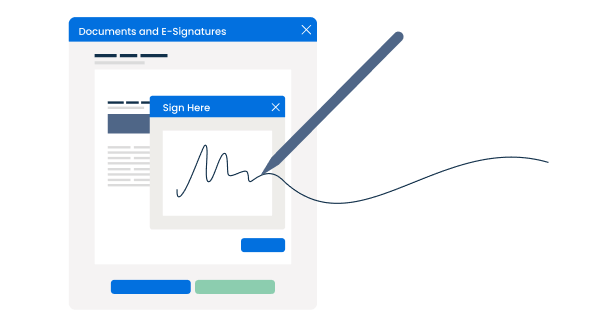
Using the legal framework set by the ESIGN Act and the UETA, electronic signatures are generally valid in most industries in the US.
However, it’s important to note that—while e-signatures may be legal in most cases in a particular industry—they may not be legal for every document.
In the automotive industry, for example, vehicle title transfer documents in many jurisdictions require traditional signatures (even though other electronic signatures may be valid for many other types of automotive-industry documents).
Do electronic signatures hold up in court?
Yes, electronic signatures hold up in court. In the United States, laws like the E-SIGN Act and the UETA recognize electronic signatures as legally binding and enforceable.
When are e-signatures not legal or not used in the US?
You may be wondering: Are there any instances where electronic signatures are not legally binding?
While—as outlined by ESIGN and UETA—e-signatures are generally accepted as valid in instances where handwritten signatures are accepted, there are exceptions. Even in states and industries where e-signatures are legal, there are certain types of documents where wet signatures are still required for them to be legally binding.
Some examples of types of documents that may require a handwritten signature in some US states include:
- Wills and trusts
- Real estate transactions (for example, deeds and mortgage documents)
- Certificates of marriage, birth, or death
- Family law documents (such as adoption papers or divorce decrees)
- Certain court orders or court documents
- Healthcare documents (like “do not resuscitate” orders and health proxies)
This list is not exhaustive and may vary by state. Ultimately, you should always verify whether e-signatures are acceptable for specific types of documents in your jurisdiction, and stay up-to-date on any changes to laws in your area regarding e-signature use cases.
What documents cannot be signed electronically?
Certain documents, including wills, codicils, testamentary trusts, divorce and adoption papers, some court orders, and notarized contracts, cannot typically be signed electronically. Always verify specific state regulations for precise limitations.
Benefits and advantages of using electronic signatures
When used appropriately, there are numerous reasons why lawyers and clients may prefer to use e-signatures over traditional handwritten signatures, including:
- Added convenience. Modern e-signature technology makes it easy to sign documents remotely—anywhere and at any time. This means less time and expenses to collect signatures, improving legal operations in your firm. And, from a client’s perspective, a smoother and more convenient signing experience can add to a more positive overall client experience.
- Easier document management. Once an e-signature is collected, there’s no need to scan or physically mail documents, and documents can be easily managed electronically. This leads to time and effort saved on administrative tasks.
- Less paper. Whether or not your law firm is fully paperless, e-signatures reduce paper consumption. In this way, e-signatures can reduce a law firm’s paper, printing, and postage costs.
- Added security. Many modern e-signature programs offer more security than traditional wet signatures on paper. Digital encryption and authentication can help ensure the integrity of electronic signatures (for example, against forgery).
- Digital audit trails. When using e-signature software to facilitate the electronic signing of documents, most platforms will record and time-stamp each action taken in the process (such as who signed a document, their IP address, etc.). This generates a detailed audit trail for the signature process, which can help to establish authenticity (which may be useful in court should there be disputes regarding signature authenticity).
You may like these posts
Ensuring legally binding electronic signatures
As we outline in our guide to electronic signatures for lawyers, there are rules and guidelines for what makes an electronic signature legally valid under the ESIGN Act and UETA in the US. Using the ESIGN Act and UETA as guidance, e-signatures must meet specific criteria to be considered legally binding, including:
Criteria for legally binding e-signatures:
- A clear intent to sign. As with traditional pen-on-paper signatures, e-signatures require the signer to show their intention to sign an agreement electronically. This could be as simple as having the signer click on a clear “Accept” button on a website or typing out their name. This requirement clarifies the intent to sign, preventing anyone from tricking others into e-signing or signing unintentionally.
- Consent to do business electronically. Similarly, for an e-signature to be legally binding, all parties involved must agree to conduct business electronically. For example, asking signers to “click to accept” a standard consent clause could demonstrate consent.
- Signature attribution. The electronic signature should be clearly attributable to the signer. Authentication methods like digital certificates can achieve this identity verification.
- Association of signature with the record. For an electronic signature to be valid, it must directly associate with a record of the signature. The system that captures the e-signature must keep a record reflecting the process that creates the signature.
- Record retention. Accurate electronic signature records must be created. These records must be retainable and accurately reproducible for later reference by all parties involved or entitled.
- Signed copies of the agreement or document. Similarly, all signers of an e-signed document should be given a fully executed copy of the document.
- An opt-out option. Though not strictly required under the ESIGN Act or UETA, contracts with consumers generally include a clause allowing a signer to opt out of signing an agreement electronically. And, if necessary, there should also be accessible instructions on how to sign an agreement manually.
While these criteria align with the ESIGN Act and UETA, e-signature laws can vary by jurisdiction and situation. In some instances and jurisdictions, you may need additional measures to verify the signer, such as secure logins to e-signature portals, multi-factor authentication, or biometric authentication.
Security measures to prevent tampering with electronic signatures
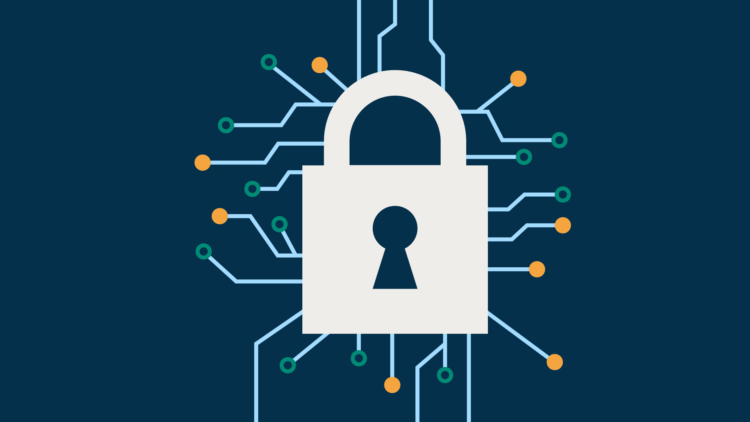
As with any electronic data handled by law firms, it’s crucial to take steps to ensure the security of and prevent tampering with electronic signatures. While nothing is foolproof, certain measures and best practices can help keep electronic signatures and their documents secure.
First and foremost, it’s essential that law firms use the right tools and technologies. Choosing reputable e-signature tools that follow strict security standards helps law firms maintain the legal validity of electronic signatures.
DocuSign and Adobe Acrobat Sign, for example, both use multiple security protocols like data encryption, authorized user authentication, and audit trails.
Is DocuSign legally binding?
Yes, e-signatures via Docusign can be considered a legally binding electronic signature if certain requirements are met. You can use DocuSign as a tool to help facilitate legal electronic signatures, provided that all criteria for the use of electronic signatures for the applicable jurisdiction and situation are met.
To learn more about data security for law firms, read our guide here.
With the help of secure e-signature tools, you can also look for security measures to help prevent tampering with electronic signatures, such as:
- Authentication. Requiring robust, strong user authentication methods (such as multi-factor authentication, passwords, or biometric authentication measures) to ensure authorized signers are signing.
- Encryption. Use tools with strong encryption to help safeguard and prevent unauthorized access or tampering of the signature or document.
- Audit trails. Digital audit trails record all actions linked to the signing process, such as viewing, editing, and signing the document. This tracking makes it easier to detect unauthorized access and deters tampering.
- Digital certificates. Issued by a trust service provider or certification authority, digital certificates are electronic “credentials” that help confirm someone’s identity online. Electronic signature platforms often use digital certificate management as part of their security measures to help prevent tampering.
Are electronic signatures valid in court?
In many instances, yes—e-signatures are typically considered valid evidence in court, using the same criteria that would apply to traditional signatures. In fact, because e-signatures can employ additional security measures (such as audit trails and authentication), electronic signatures may even provide stronger court-admissible evidence than traditional signature methods.
To assess the admissibility of e-signatures in court, consider which legal framework governing electronic signatures applies to your jurisdiction (for example, the ESIGN Act, UETA, and/or other state-specific frameworks) as well as the criteria and legal requirements for electronic signatures to be legally binding under that applicable framework.
Electronic signatures must meet that criteria, and you must be able to prove the authenticity of the e-signature and that the signed document has not been tampered with.
Electronic signatures: Compliance and international considerations
As we’ve outlined, electronic signature laws and regulations in the US are based federally on the ESIGN Act, and on the UETA in most states. So, to stay compliant with electronic signature laws and regulations in the United States, you must stay up-to-date with these acts, as well as learn the particulars of any state-specific requirements that apply to your situation.
Some states, for example, have conditions related to factors such as:
- Protocol for disclosing electronic signatures
- How the signatory’s identity is authenticated
Internationally, while many countries have adopted similar policies recognizing electronic signatures, there is a lot of variance when it comes to the legality of electronic signatures in other countries.
Some countries have adopted laws with more specific rules related to how documents can be signed electronically. Thailand, for example, uses a two-tier legal model that adds extra requirements for electronic signatures.
As a lawyer, it’s crucial to learn the specifics of any international laws and regulations pertaining to electronic signatures when handling transactions involving parties outside of the US.
As a helpful starting point, DocuSign’s online eSignature Legality Guide offers a country-by-country summary of current e-signature laws and rules.
Electronic signature laws in the United Kingdom and European Union
European Union

In 2016, the European Union’s 27 countries adopted the Electronic Identification, Authentication, and Trust Services (eIDAS) Regulation. This regulation allows EU countries to use e-signatures in cross-border agreements. It also ensures that electronic signatures are generally admissible as evidence in EU courts.
Under the eIDAS Regulation, there are three types of electronic signatures:
- Electronic signatures, or “simple” electronic signatures that basically indicate a signer’s acceptance or approval.
- Advanced electronic signatures, which fulfill additional requirements for signer ID verification, security, and tamper sealing.
- Qualified electronic signatures, which meet advanced electronic signature requirements and are backed by a qualified certificate.
United Kingdom

The United Kingdom accepts electronic signatures as legally binding, in most circumstances, if they meet certain criteria. In the United Kingdom, the Electronic Communications Act 2000 (ECA 2000), the Electronic Signatures Regulations 2002, and the UK eIDAS Regulations establish the rules for electronic signatures.
Cross-border implications and challenges of using electronic signatures
When it comes to cross-border transactions and electronic signatures, it’s important to learn and understand the laws and regulations of the countries in which the signees are based. It’s essential to know and comply with the legal requirements necessary for electronic signatures to be valid and legal for each jurisdiction involved.
Some countries may also have specific requirements related to the technology used when collecting electronic signatures. Here again, be sure to check that electronic signatures comply with any mandated processes or technology to ensure they are legally binding.
Educational resources and support for electronic signatures

When used correctly, electronic signatures can save time, streamline workflows, reduce printing and storage costs, and enhance the integrity of signed documents. However, as previously noted, it’s crucial for lawyers to understand the specifics of electronic signatures that apply to them—especially as the laws, regulations, and technology surrounding electronic signatures are frequently evolving.
To help expand your understanding of the legality of electronic signatures, the following guides and resources may be good places to start:
- Read the Electronic Signatures in Global and National Commerce (ESIGN) Act here.
- The Electronic Signature & Records Association (ESRA) offers a variety of resources here.
- DocuSign’s online eSignature Legality Guide offers a country-by-country summary of current e-signature laws and rules here.
- Read Adobe’s guide to Electronic Signature Laws & Regulations in the United States here.
- Read Clio’s guide to electronic signatures for lawyers here.
Best practices for electronic signatures
Lawyers and law firms can benefit from using e-signatures, where appropriate. While it’s important to do your own research on which rules and regulations apply to your jurisdiction and situation, the following best practices can help you stay compliant and streamline your workflows when using electronic signatures:
- Use reputable, secure e-signature platforms. By choosing e-signature tools that maintain high-security standards and comply with legal standards, you can make it easier to stay compliant, with less work on your part.
- Stay up-to-date with legal requirements for electronic signatures. Take the time to learn the law governing the use of electronic signatures for your jurisdiction, and stay on top of any changes or updates.
- Use authentication methods. Take advantage of authentication measures (such as multi-factor authentication) used to ensure that the identity of signatories is correct.
- Document the process. Have a clear process, preferably in writing, for how electronic signatures are handled at your firm. This may include everything from the step-by-step process of collecting signatures to your procedures for the storage and retention of documents signed electronically.
Tips for implementing electronic signature solutions
The right technology goes a long way when it comes to adopting electronic signature solutions at your firm. Consider the following when weighing your options:
- Compliance. Any e-signature tool you use at your firm should comply with the rules and regulations governing electronic signatures in your jurisdiction.
- Ease of use and functionality. Choose a tool that is easy to navigate and use, both for you and your clients when signing.
- Security. Look for e-signature tools that employ high-security standards and features, such as authentication, encryption, and audit trails.
- Support. As with any tech tool you consider using, make sure that there is adequate support and assistance available should any questions arise.
- Integrations. If your electronic signature platform can integrate with other legal tech tools, you can unlock further efficiency and streamlined workflows. Clio, for example, integrates with popular e-signature solutions like DocuSign.
On the topic of integrations, Clio has a few options for e-signature capabilities that integrate directly in with your law practice management and client intake tools.
- Clio Grow features integrated e-signature technology, which makes it fast and simple to streamline and automate your legal client intake process.
- With Clio Manage’s integration with Dropbox Sign, you can easily prepare documents and then send them to recipients for e-signatures.
- And, with the upcoming launch of Clio File (sign up here to be the first to get notified when it’s available), users will soon have e-signature features integrated right inside Clio Manage.
This information applies only to practices in the US. This article is provided for informational purposes only. It does not constitute legal, business, or accounting advice.
We published this blog post in March 2024. Last updated: .
Categorized in: Business, Technology
Get paid faster, save time, and reduce outstanding bills
Download our free e-book and learn the 7 easy steps to easier, more efficent billing
Get the e-book
